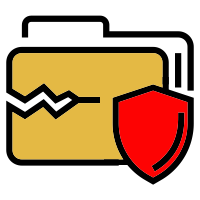
Temple University Company Cyber Security Posture
temple.eduAs the largest university in one of the nation’s most iconic cities, Temple educates diverse future leaders from across Philadelphia, the country and the world who share a common drive to learn, prepare for their careers and make a real impact. Founded as a night school by Russell Conwell in 1884, Temple University has evolved into an international powerhouse in higher education. Temple is a top-tier research institution with roughly 40,000 undergraduate, graduate and professional students, 17 schools and colleges, eight campuses and hundreds of degree programs.
Temple University Company Details
templeuniversity
12921 employees
304416.0
611
Higher Education
temple.edu
Scan still pending
TEM_1456776
In-progress
Between 800 and 900
This score is AI-generated and less favored by cyber insurers, who prefer the TPRM score.
 Temple University Global Score
Temple University Global Score.png)

Temple University Company Scoring based on AI Models
| Model Name | Date | Description | Current Score Difference | Score |
|---|---|---|---|---|
| AVERAGE-Industry | 03-12-2025 | This score represents the average cybersecurity rating of companies already scanned within the same industry. It provides a benchmark to compare an individual company's security posture against its industry peers. | N/A | Between 800 and 900 |
Temple University Company Cyber Security News & History
| Entity | Type | Severity | Impact | Seen | Url ID | Details | View |
|---|---|---|---|---|---|---|---|
| Temple University | Data Leak | 85 | 3 | 06/2019 | TEM203726323 | Link | |
Rankiteo Explanation : Attack with significant impact with internal employee data leaksDescription: The personal information of 160 Temple University students was exposed after an employee accidentally uploaded a document to a public university website. The document includes information like dates of birth, cell phone numbers, and passport information. Affected students were notified that their names, passport numbers, issuing passport country, passport issue date, dates of birth, travel dates, and cell phone numbers were exposed on the website. Students got 90 days to enroll in free credit and web monitoring services, a $1 million identity fraud loss reimbursement, and identity theft restoration, among other services from Kroll, a risk mitigation firm. | |||||||
Temple University Company Subsidiaries

As the largest university in one of the nation’s most iconic cities, Temple educates diverse future leaders from across Philadelphia, the country and the world who share a common drive to learn, prepare for their careers and make a real impact. Founded as a night school by Russell Conwell in 1884, Temple University has evolved into an international powerhouse in higher education. Temple is a top-tier research institution with roughly 40,000 undergraduate, graduate and professional students, 17 schools and colleges, eight campuses and hundreds of degree programs.
Access Data Using Our API

Get company history
.png)
Temple University Cyber Security News
New cybersecurity and human behavior major brings a liberal arts lens to a traditionally technical topic
Whenever you make an online purchase or make a mobile payment, your cybersecurity is at risk. Understanding the human element behind these risks ...
Temple to launch interdisciplinary cybersecurity and human behavior major
Temple is launching a new cybersecurity and human behavior major, an interdisciplinary program housed in the College of Liberal Arts, ...
Temple conducts free cybersecurity training to underserved communities, develops college students’ career skills
For the past month, Temple University students have been educating North Philadelphia community residents on how to avoid becoming a victim of ...
The Top 10 Best Colleges in Philadelphia for Tech Enthusiasts in 2025
The University of Pennsylvania (UPenn) continues to crush it in tech education, establishing itself as a powerhouse in Philadelphia's growing ...
Career and Education - External Resources
The purpose of the Cyber Force Initiative is to quickly help students transition to a career in cybersecurity. Once the program application is completed, ...
Critical Infrastructure Ransomware Attack Tracker Reaches 2,000 Incidents
Temple University's Critical Infrastructure Ransomware Attacks (CIRA) database now contains over 2,000 entries.
Temple University buys AI-powered firearm-detection tech from ZeroEyes
Temple University administrators announced they're using new artificial intelligence technology hoped to spot firearms on campus.
SCV News | COC Employee Named 2025 CISOA Rising Star
Not all heroes wear capes—some are just really good with computers. When a cyber-attack hit a local elementary school district in 2024, ...
IST students win top spots at social engineering competition
Social engineering is any act that uses persuasion strategies to influence individuals to take an action that may or may not be in their best ...

Temple University Similar Companies

Central China Normal University
Central China Normal University Show more Show less

University of Alabama at Birmingham
Known for its innovative and interdisciplinary approach to education at both the graduate and undergraduate levels, the University of Alabama at Birmingham, a part of the University of Alabama System, is an internationally renowned research university and academic medical center with over $700 milli

The University of Kansas
KU is a major comprehensive research and teaching university and a center for learning, scholarship, and creative endeavor. KU is the only Kansas Regents university to hold membership in the prestigious Association of American Universities (AAU), a select group of public and private research univers

Louisiana State University
LSU is the flagship institution of Louisiana and is one of only 30 universities nationwide holding land-grant, sea-grant and space-grant status. Since 1860, LSU has served its region, the nation, and the world through extensive, multipurpose programs encompassing instruction, research, and public

Northwestern University
Northwestern is one of the nation’s premier research universities, combining innovative teaching and pioneering research in a highly collaborative, multidisciplinary, and diverse environment. Northwestern provides both students and faculty exceptional opportunities for intellectual, personal, and pr

University of Illinois Urbana-Champaign
The University of Illinois Urbana-Champaign is dedicated to building upon its tradition of excellence in education, research, public engagement and economic development. More than 3,000 faculty members discover and create new knowledge. Their work is an economic engine for the state and is recognize

Frequently Asked Questions
Explore insights on cybersecurity incidents, risk posture, and Rankiteo's assessments.
Temple University CyberSecurity History Information
How many cyber incidents has Temple University faced?
Total Incidents: According to Rankiteo, Temple University has faced 1 incident in the past.
What types of cybersecurity incidents have occurred at Temple University?
Incident Types: The types of cybersecurity incidents that have occurred incident Data Leak.
How does Temple University detect and respond to cybersecurity incidents?
Detection and Response: The company detects and responds to cybersecurity incidents through third party assistance with Kroll and remediation measures with Free credit and web monitoring services, $1 million identity fraud loss reimbursement, Identity theft restoration.
Incident Details
Can you provide details on each incident?

Incident : Data Exposure
Title: Temple University Data Exposure Incident
Description: The personal information of 160 Temple University students was exposed after an employee accidentally uploaded a document to a public university website.
Type: Data Exposure
Attack Vector: Accidental Data Upload
Threat Actor: Internal Employee
Motivation: Accidental
What are the most common types of attacks the company has faced?
Common Attack Types: The most common types of attacks the company has faced is Data Leak.
Impact of the Incidents
What was the impact of each incident?

Incident : Data Exposure TEM203726323
Data Compromised: names, passport numbers, issuing passport country, passport issue date, dates of birth, travel dates, cell phone numbers
Identity Theft Risk: High
What types of data are most commonly compromised in incidents?
Commonly Compromised Data Types: The types of data most commonly compromised in incidents are Personal Information.
Which entities were affected by each incident?

Incident : Data Exposure TEM203726323
Entity Type: Educational Institution
Industry: Education
Customers Affected: 160
Response to the Incidents
What measures were taken in response to each incident?

Incident : Data Exposure TEM203726323
Third Party Assistance: Kroll
Remediation Measures: Free credit and web monitoring services, $1 million identity fraud loss reimbursement, Identity theft restoration
How does the company involve third-party assistance in incident response?
Third-Party Assistance: The company involves third-party assistance in incident response through Kroll.
Data Breach Information
What type of data was compromised in each breach?

Incident : Data Exposure TEM203726323
Type of Data Compromised: Personal Information
Number of Records Exposed: 160
Sensitivity of Data: High
Personally Identifiable Information: names, passport numbers, issuing passport country, passport issue date, dates of birth, travel dates, cell phone numbers
What measures does the company take to prevent data exfiltration?
Prevention of Data Exfiltration: The company takes the following measures to prevent data exfiltration: Free credit and web monitoring services, $1 million identity fraud loss reimbursement, Identity theft restoration.
Post-Incident Analysis
What is the company's process for conducting post-incident analysis?
Post-Incident Analysis Process: The company's process for conducting post-incident analysis is described as Kroll.
Additional Questions
General Information
Who was the attacking group in the last incident?
Last Attacking Group: The attacking group in the last incident was an Internal Employee.
Impact of the Incidents
What was the most significant data compromised in an incident?
Most Significant Data Compromised: The most significant data compromised in an incident were names, passport numbers, issuing passport country, passport issue date, dates of birth, travel dates and cell phone numbers.
Response to the Incidents
What third-party assistance was involved in the most recent incident?
Third-Party Assistance in Most Recent Incident: The third-party assistance involved in the most recent incident was Kroll.
Data Breach Information
What was the most sensitive data compromised in a breach?
Most Sensitive Data Compromised: The most sensitive data compromised in a breach were names, passport numbers, issuing passport country, passport issue date, dates of birth, travel dates and cell phone numbers.
What was the number of records exposed in the most significant breach?
Number of Records Exposed in Most Significant Breach: The number of records exposed in the most significant breach was 160.0.
What Do We Measure?
















Every week, Rankiteo analyzes billions of signals to give organizations a sharper, faster view of emerging risks. With deeper, more actionable intelligence at their fingertips, security teams can outpace threat actors, respond instantly to Zero-Day attacks, and dramatically shrink their risk exposure window.
These are some of the factors we use to calculate the overall score:
Identify exposed access points, detect misconfigured SSL certificates, and uncover vulnerabilities across the network infrastructure.
Gain visibility into the software components used within an organization to detect vulnerabilities, manage risk, and ensure supply chain security.
Monitor and manage all IT assets and their configurations to ensure accurate, real-time visibility across the company's technology environment.
Leverage real-time insights on active threats, malware campaigns, and emerging vulnerabilities to proactively defend against evolving cyberattacks.




